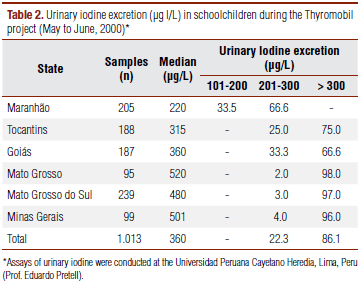Brazilian legislation, since 1955, failed to achieve its objectives because the issue was not properly addressed: iodized salt was only available in endemic areas, at a low amount of 10 mg Iodine/kg salt. Lack of surveillance and cooperation were common errors. From 1982 to 1992, the INAN distributed potassium iodate to the industry free of charge, but it was abolished in 1991. Only four years later (1995) was a new law enacted effective in determining that all salt for human use should be iodized at levels established by the Health Authorities. During the period comprising 1998 to 2004, excessive iodination of salt (40 to 100 mg/kg) could lead to an increased prevalence of chronic autoimmune thyroiditis and iodine-induced hyperthyroidism. In 2003, the content of iodine/kg of salt was lowered to 20 to 60 mg I/kg salt. A national survey of schoolchildren is currently underway and will indicate the changes required for adequate iodine in salt for human use.
Iodine nutrition; excess iodine; hyperthyroidism; hypothyroidism; autoimmune thyroid disease




